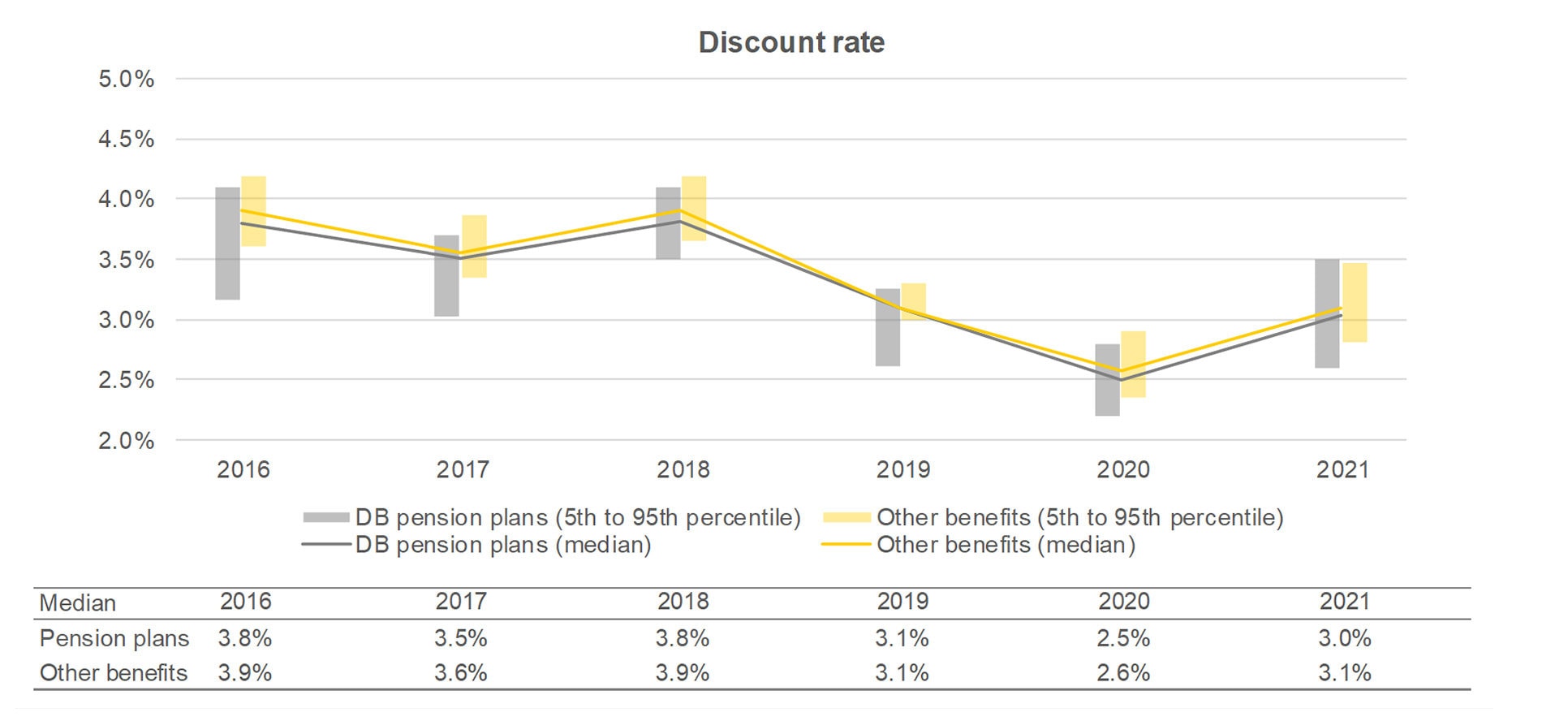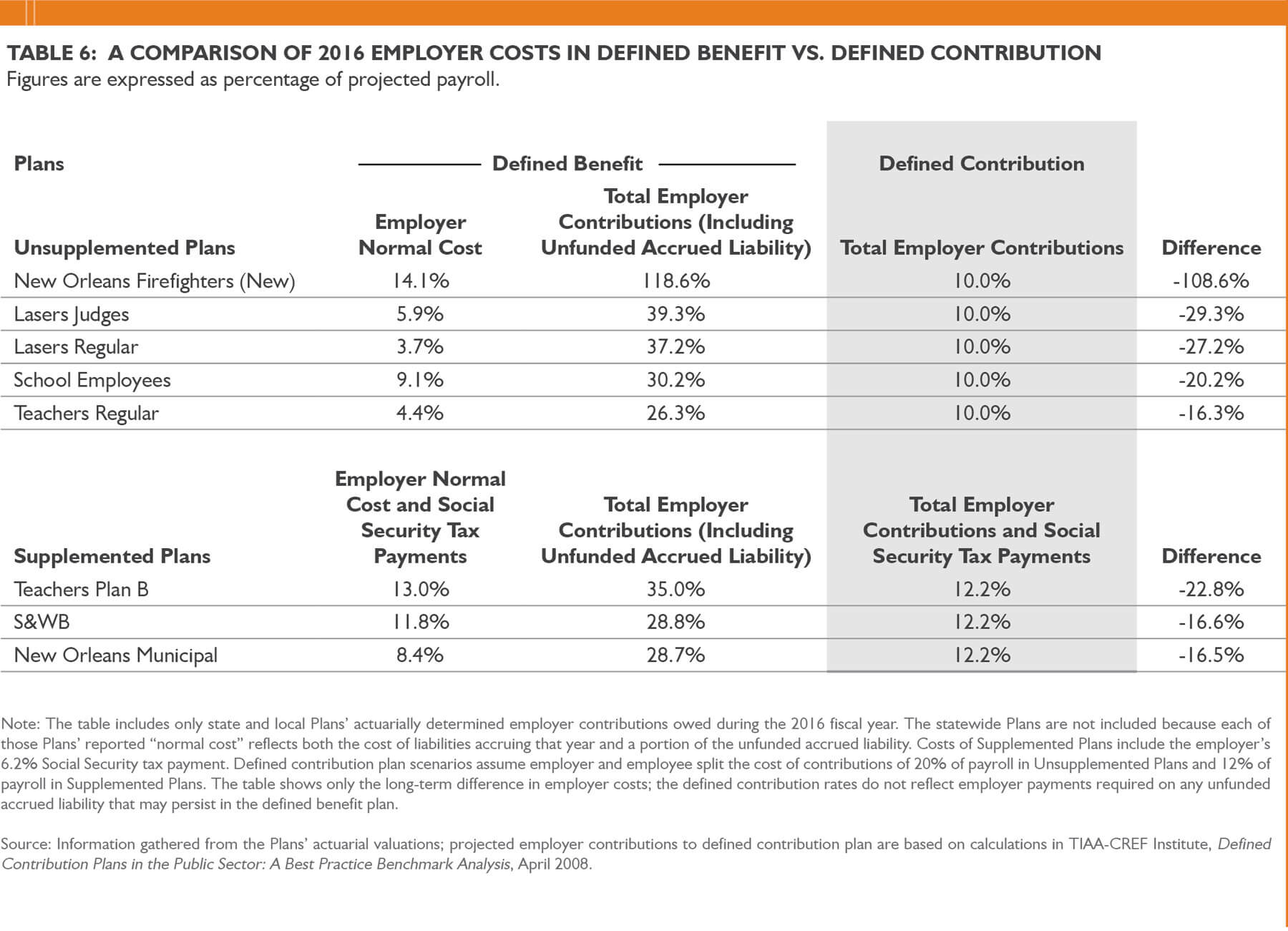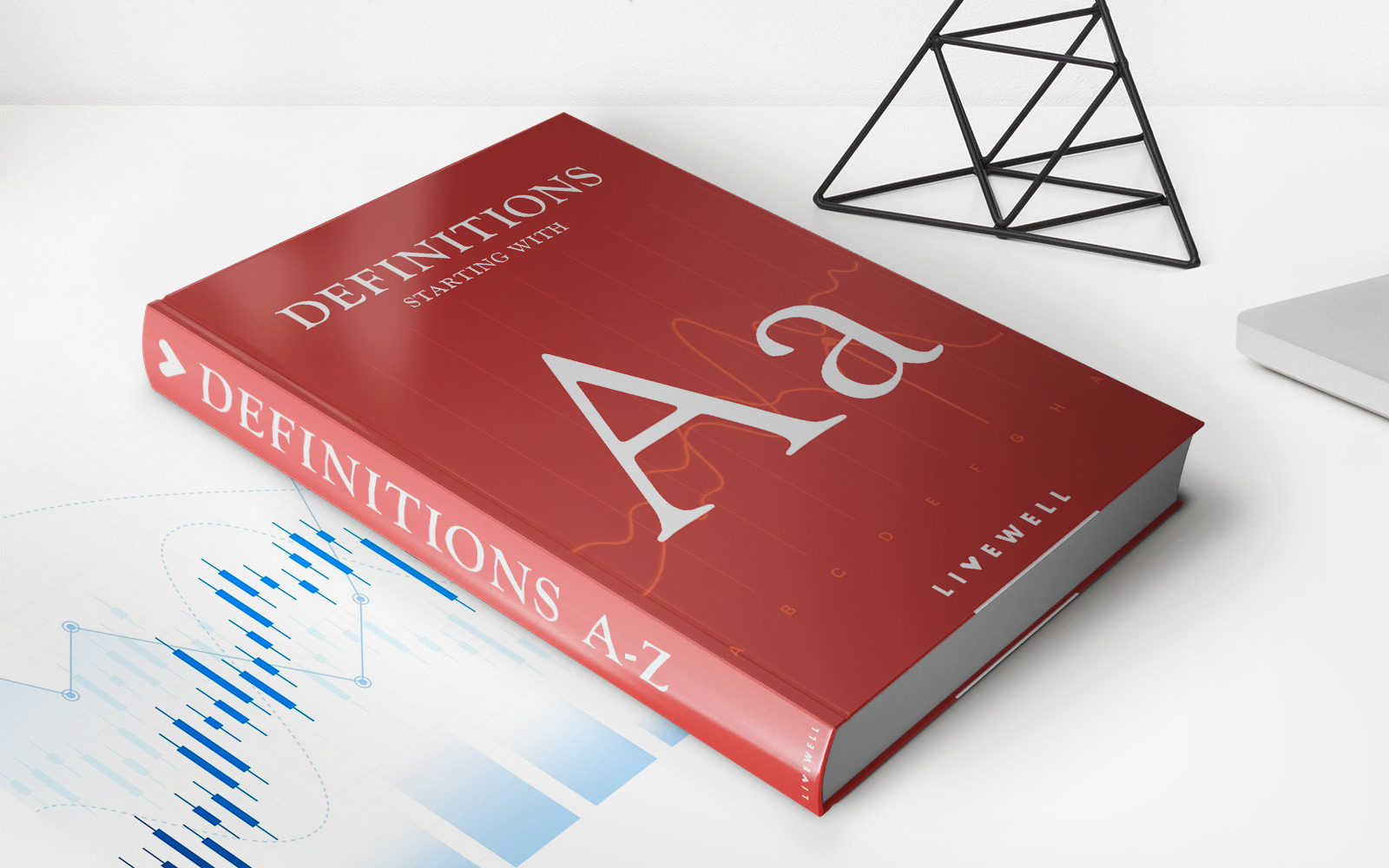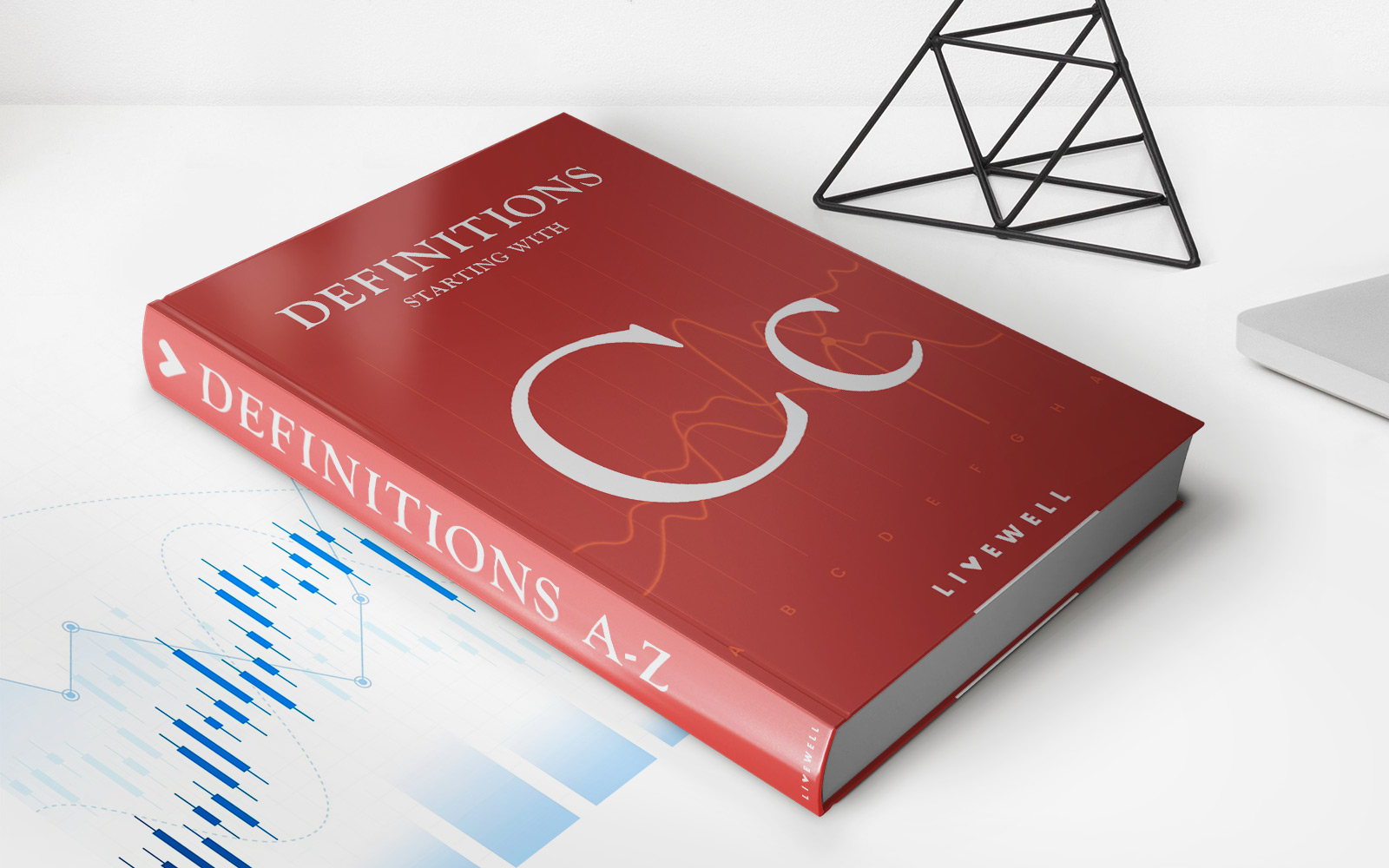Home>Finance>Why Do Defined Benefit Plans Use Covered Compensation To Calculate Pension


Finance
Why Do Defined Benefit Plans Use Covered Compensation To Calculate Pension
Modified: December 29, 2023
Learn why defined benefit plans use covered compensation for pension calculations in finance. Understand the significance and benefits of this method.
(Many of the links in this article redirect to a specific reviewed product. Your purchase of these products through affiliate links helps to generate commission for LiveWell, at no extra cost. Learn more)
Table of Contents
- Introduction
- What are defined benefit plans?
- The importance of calculating pension benefits accurately
- Understanding covered compensation
- Why do defined benefit plans use covered compensation?
- Advantages of using covered compensation
- Limitations of using covered compensation
- Alternatives to covered compensation for calculating pension benefits
- Conclusion
Introduction
Defined benefit plans are a type of retirement plan in which employees receive a specified pension benefit upon retirement, based on a formula that takes into account various factors such as years of service and salary history. These plans are often offered by employers as a way to provide a secure and predictable source of income for their employees in retirement.
Calculating pension benefits accurately is crucial for both employers and employees to ensure that the retirement income provided by the plan is fair and sustainable. One key component in the calculation of pension benefits is covered compensation.
Covered compensation is the portion of an employee’s salary that is used to determine their pension benefit under a defined benefit plan. It typically includes base salary, bonuses, commissions, overtime pay, and other forms of compensation. This figure helps to establish the employee’s final average salary, which is a key factor in the formula used to calculate the pension benefit.
Understanding why defined benefit plans use covered compensation to calculate pension benefits is essential for both plan sponsors and participants. In this article, we will explore the reasons behind this practice, the advantages it offers, and its potential limitations. We will also discuss alternative methods that some plans use to calculate pension benefits.
By delving into the intricacies of covered compensation and its role in the calculation of pension benefits, we aim to provide valuable insights into the inner workings of defined benefit plans and the factors that determine retirement income. Whether you are an employer seeking a comprehensive understanding of pension plan design or an employee interested in learning more about your retirement benefits, this article will equip you with the knowledge to navigate the complexities of covered compensation and its impact on your pension.
What are defined benefit plans?
Defined benefit plans, also known as traditional pension plans, are retirement plans that guarantee a specific benefit amount to employees upon retirement. Unlike defined contribution plans, such as 401(k) plans, where the retirement benefit depends on the contributions and investment performance, defined benefit plans provide a fixed income stream based on a predetermined formula.
Under a defined benefit plan, the employer is responsible for funding the plan and assumes the investment risks. The employer contributes to the plan on behalf of the employees, and the amount of the benefit is determined by various factors, including the employee’s salary history, years of service, and a specified formula set by the plan.
One of the attractive features of defined benefit plans is the predictability and stability of retirement income they offer. Employees can have peace of mind knowing that they will receive a regular pension payment throughout their retirement years.
Employers often use actuarial calculations to determine the funding requirements for defined benefit plans. These calculations take into account factors such as the number of employees, their ages, salary levels, expected length of retirement, and investment return assumptions.
Defined benefit plans have seen a decline in popularity among employers in recent years, partly due to the financial burden they impose and the volatility they can introduce into a company’s balance sheet. Despite this, many employers still offer defined benefit plans as a means of attracting and retaining employees or fulfilling contractual obligations.
It’s crucial for employees to understand the terms and conditions of their defined benefit plans and the factors that contribute to the calculation of their retirement benefits. Covered compensation plays a pivotal role in determining the pension amount, and having a solid understanding of this concept is essential for both employers and employees involved in these plans.
The importance of calculating pension benefits accurately
The accurate calculation of pension benefits is of utmost importance for both employers and employees. A small miscalculation can have significant ramifications on the retirement income provided by the defined benefit plan. Here’s why calculating pension benefits accurately is crucial:
1. Fair distribution of retirement income: Accurate calculations ensure that employees receive a fair and equitable retirement income based on their years of service and salary history. This helps to maintain employee satisfaction and morale, as individuals feel that their contributions to the organization are duly rewarded in their retirement years.
2. Financial planning for retirement: Precise pension benefit calculations allow employees to make informed decisions and plan their finances effectively for retirement. Having a clear understanding of the retirement income they can expect enables employees to budget and manage their expenses, ensuring a comfortable and financially secure retirement.
3. Cost management for employers: Accurate pension benefit calculations help employers accurately assess the financial obligations associated with the defined benefit plan. By properly estimating the pension liabilities, employers can make appropriate financial arrangements to ensure the long-term sustainability and affordability of the plan.
4. Compliance with regulatory requirements: Pension calculations must adhere to legal and regulatory standards to ensure compliance. Accurate calculations are essential to meet reporting requirements and avoid penalties or legal issues associated with underestimating or overestimating pension benefits.
5. Trust and transparency: Accurate pension benefit calculations foster trust between employers and employees. When employees have confidence that their pension benefits are calculated accurately, it strengthens the employer-employee relationship and builds trust in the overall retirement plan.
6. Protection against potential lawsuits: Inaccurate calculations can lead to disgruntled employees and potential lawsuits. By ensuring accurate pension benefit calculations, employers can mitigate the risk of legal disputes and the costly consequences associated with them.
Given the significance of accurate pension benefit calculations, it is essential for employers to have robust systems and processes in place to calculate and communicate retirement benefits effectively. Employees should also actively engage with their employers and plan administrators to understand the calculation methodology and address any discrepancies or concerns.
Understanding covered compensation
Covered compensation is a key element in the calculation of pension benefits under a defined benefit plan. It refers to the portion of an employee’s salary that is used to determine their retirement income. Covered compensation includes various types of compensation, such as:
- Base salary: The employee’s regular salary, usually excluding overtime or bonuses.
- Bonuses: Additional payments given to employees based on their performance or company profitability.
- Commissions: Payments received by employees who earn a percentage of the sales or transactions they generate.
- Overtime pay: Extra compensation provided to employees for working more than the standard hours.
- Other forms of compensation: Any additional benefits or allowances provided by the employer, such as housing allowance, car allowance, or stock options.
Covered compensation is an essential factor in determining the final average salary (FAS), which is used in the formula to calculate the pension benefit. The FAS is typically calculated by taking the average of the highest-paid consecutive years of covered compensation, often over a period of three to five years.
It’s important to note that covered compensation may be subject to certain limits or exclusions as defined by the plan or regulatory authorities. For instance, there may be a cap on the amount of compensation that can be considered for pension calculation purposes. Additionally, certain types of compensation, such as non-taxable fringe benefits, may not be included in covered compensation.
Understanding the concept of covered compensation is crucial for both employers and employees. Employers need to accurately determine and document the covered compensation for each employee to ensure appropriate pension calculations. Meanwhile, employees should be aware of the types of compensation that contribute to their pension benefits and how changes in their salary structure can impact their retirement income.
Plan administrators and HR professionals play a key role in overseeing the calculation of covered compensation and ensuring compliance with the plan’s rules and regulations. Clear communication and transparency regarding the determination of covered compensation are vital to maintain trust and transparency within the organization.
Why do defined benefit plans use covered compensation?
Defined benefit plans utilize covered compensation as a basis for calculating pension benefits for several reasons:
1. Reflects overall compensation: Covered compensation takes into account various forms of income that employees receive, such as base salary, bonuses, commissions, and overtime pay. By considering these different components, the pension benefit calculation aims to reflect the employee’s overall compensation package, ensuring a fair reflection of their income during their working years.
2. Considers career progression: Using covered compensation allows the defined benefit plan to consider the employee’s salary history and career progression when calculating their pension benefit. Since the final average salary is a key factor in the formula, it captures any increases in compensation over the years, reflecting the employee’s rising responsibilities and potential promotions.
3. Encourages long-term commitment: Covered compensation incentivizes employees to remain with the employer for an extended period. As the pension benefit calculation typically considers years of service, employees who stay with the company for a longer duration are rewarded with a higher pension benefit due to their increased covered compensation over time.
4. Aligns with retirement income goals: Using covered compensation ensures that the pension benefit calculation aligns with the overall goal of providing a secure and predictable income stream in retirement. By considering the employee’s salary history, the defined benefit plan can aim to replace a sufficient portion of pre-retirement income, helping employees maintain their standard of living during retirement.
5. Simplifies calculations: Covered compensation offers a standardized and straightforward approach to calculate pension benefits. It provides a clear framework for determining the final average salary and enables quick and consistent calculations across the employee population. This simplifies the administration of the defined benefit plan and ensures a systematic approach to calculating retirement benefits.
Overall, the use of covered compensation in the calculation of pension benefits under defined benefit plans offers a comprehensive and equitable approach. It considers various forms of employee income, reflects career progression, promotes long-term commitment, aligns with retirement income goals, and simplifies calculations. By utilizing covered compensation, defined benefit plans can provide employees with a reliable and meaningful pension benefit that rewards their years of service and compensation throughout their careers.
Advantages of using covered compensation
The use of covered compensation in the calculation of pension benefits under defined benefit plans offers several advantages:
1. Comprehensive reflection of income: Covered compensation considers various forms of employee income, including base salary, bonuses, commissions, and overtime pay. This approach provides a comprehensive reflection of the employee’s overall compensation package, ensuring that the pension benefit calculation captures the full scope of their earnings during their working years.
2. Consistency and simplicity: Using covered compensation provides a standardized and straightforward method for calculating pension benefits, ensuring consistency across the employee population. It simplifies the administration of the plan and enables easy comparisons and calculations, contributing to the efficient management of the defined benefit plan.
3. Reflects career progression: Covered compensation takes into account the employee’s salary history, including any increases in compensation over time. This approach aligns with the employee’s career progression and potential promotions, ensuring that the pension benefit calculation reflects their rising responsibilities and income growth throughout their tenure with the employer.
4. Reward for long-term commitment: By considering years of service and the associated covered compensation, the use of covered compensation encourages employees to remain dedicated to the employer over the long term. Employees who stay with the company for an extended period are rewarded with higher pension benefits, reflecting their loyalty and commitment.
5. Aligns with retirement income goals: Covered compensation ensures that the calculated pension benefit aligns with the objective of providing a secure and predictable income stream during retirement. It aims to replace a substantial portion of the employee’s pre-retirement income, helping to maintain their standard of living and financial security in retirement.
6. Easily comparable across organizations: The use of covered compensation allows for easy comparison of pension benefits across different organizations. Employees with similar covered compensation and years of service can assess the attractiveness of pension benefits offered by various employers, enabling them to make informed decisions regarding their career choices and retirement planning.
7. Considers variable income: Covered compensation accounts for variable income components such as bonuses and commissions, allowing employees to benefit from these additional earnings when calculating their pension benefits. This ensures that employees are not disadvantaged by having a significant portion of their compensation tied to performance-related or variable elements.
In summary, utilizing covered compensation in the calculation of pension benefits offers advantages such as comprehensive reflection of income, consistency, alignment with career progression and retirement income goals, reward for long-term commitment, easy comparability across organizations, and consideration of variable income. These benefits contribute to the fairness and effectiveness of defined benefit plans in providing employees with a stable and fulfilling retirement income.
Limitations of using covered compensation
While using covered compensation in the calculation of pension benefits offers several advantages, it is important to acknowledge the limitations associated with this approach:
1. Exclusion of non-monetary benefits: Covered compensation primarily focuses on monetary forms of compensation, such as salary, bonuses, and commissions. It may exclude non-monetary benefits, such as healthcare benefits or employer-provided accommodations. This exclusion can result in the underrepresentation of the employee’s total compensation package in the pension benefit calculation.
2. Impact of changing salary structures: Covered compensation relies on historical salary data and may not account for significant changes in an employee’s salary structure over time. For example, if an employee transitions from a high-salaried position to a lower-salaried position closer to retirement, their pension benefit calculation may not accurately reflect their pre-retirement income level.
3. Reliance on stated values: The accuracy of covered compensation calculations is dependent on the completeness and accuracy of the data provided by the employer. Mistakes or inconsistencies in reporting employee compensation can lead to inaccuracies in the pension benefit calculation and potentially result in either overestimating or underestimating the retirement income.
4. Influence of outliers: Covered compensation calculations typically involve averaging the highest-paid consecutive years of compensation. This method can be sensitive to outliers, such as exceptionally high or low income years. Outliers can disproportionately impact the final average salary, potentially leading to an inflated or deflated pension benefit.
5. Limited flexibility for part-time or intermittent workers: Covered compensation calculations may not adequately capture the earnings of part-time or intermittent workers who have irregular compensation patterns. The reliance on consecutive years of compensation may not accurately reflect their work history, resulting in pension benefit calculations that may not align with their actual income levels.
6. Potential for inequity: The use of covered compensation as a basis for pension benefit calculations could potentially result in inequity among employees. Some employees may receive higher compensation in non-covered forms, such as stock options, which are not considered in the calculation. This can lead to disparities in retirement income, where employees with similar covered compensation but varying non-covered compensation receive different pension benefits.
7. Inadequacy for multi-employer plans: Covered compensation calculations may face challenges in multi-employer plans where employees work for multiple employers throughout their careers. Determining the covered compensation from different employers and coordinating the pension benefit calculations can be complex and require careful coordination among the participating employers.
Despite these limitations, covered compensation remains a widely used and accepted method for calculating pension benefits in defined benefit plans. It provides a standardized approach and offers a reasonable reflection of the employee’s compensation history. Employers and plan administrators should be aware of these limitations and consider alternative methods or adjustments as necessary to mitigate any potential drawbacks and ensure the accuracy and fairness of pension benefit calculations.
Alternatives to covered compensation for calculating pension benefits
While covered compensation is commonly used in the calculation of pension benefits under defined benefit plans, there are alternative methods that some plans employ. These approaches aim to address specific concerns or provide greater flexibility in determining retirement benefits. Here are some alternatives to covered compensation:
1. Career Average Earnings: Rather than focusing on the final average salary, some plans use the concept of career average earnings. This calculation method takes into account the employee’s earnings over the entirety of their career, instead of primarily using the highest-paid consecutive years. It provides a more balanced representation of the employee’s income trajectory and can be beneficial for individuals with fluctuating income levels or those who experience significant salary changes later in their careers.
2. Cash Balance Plans: Cash balance plans are a type of hybrid plan that combines features of defined benefit and defined contribution plans. Instead of using covered compensation, these plans specify a predetermined contribution rate, often expressed as a percentage of the employee’s salary, along with an interest credit. The benefit is typically presented as an account balance, similar to a 401(k) plan, allowing employees to easily track their accrued benefits over time.
3. Career Average Revalued Earnings (CARE) Schemes: CARE schemes calculate the pension benefit based on the employee’s career average earnings, adjusted for inflation. This approach recognizes the importance of inflation in maintaining the purchasing power of retirement income. It offers a more realistic representation of the value of the employee’s earnings over their career by accounting for changes in the cost of living.
4. Points-Based Systems: Some pension plans use a points-based system to determine retirement benefits. Rather than solely relying on covered compensation, this approach assigns points based on factors such as years of service, position or rank, and specific achievements or qualifications. The total points accumulated by the employee determine their pension benefit. This system can provide greater flexibility and recognition for non-monetary contributions or career milestones.
5. Social Security Integration: Some defined benefit plans incorporate Social Security benefits into the pension calculation. This integration takes into account the employee’s expected Social Security benefit amount and offsets it against the pension benefit amount, resulting in a coordinated retirement income approach. This integration helps ensure that the combined benefit from both sources aligns with the retirement income goals of the employee.
It’s important to note that the implementation of alternative methods may vary depending on the specific plan design and legal requirements. Employers and plan sponsors should carefully consider the goals, demographics, and unique characteristics of their workforce when exploring these alternatives. Evaluation of actuarial assumptions, cost implications, and potential impact on employee satisfaction and retention should also be taken into account.
As the landscape of retirement plans continues to evolve, the exploration of alternatives to covered compensation for calculating pension benefits can provide opportunities for customization and alignment with the changing needs and preferences of employees. Ultimately, the goal remains the same: to provide employees with a secure and sustainable retirement income as a reward for their years of service and dedication.
Conclusion
The calculation of pension benefits in defined benefit plans is a critical aspect of providing employees with a secure and predictable retirement income. Covered compensation plays a vital role in this process as it captures various forms of employee income and reflects career progression. While covered compensation offers advantages such as comprehensive reflection of income, consistency, alignment with retirement income goals, and reward for long-term commitment, it also has limitations in terms of excluding non-monetary benefits, potential inequity, and challenges for part-time or intermittent workers.
Thankfully, there are alternative methods available for calculating pension benefits, such as career average earnings, cash balance plans, CARE schemes, points-based systems, and Social Security integration. These alternatives provide flexibility, address specific concerns, and offer customized approaches to determining retirement benefits.
Employers and plan administrators must consider the goals, demographics, and unique characteristics of their workforce when selecting the most appropriate method for calculating pension benefits. Clear communication and transparency regarding the chosen method are essential to maintaining trust and ensuring employees understand how their retirement benefits are determined.
Ultimately, the primary objective is to provide employees with a reliable, fair, and sustainable retirement income that honors their years of service and dedication. By carefully considering the advantages, limitations, and alternatives to covered compensation, employers can navigate the complexities of calculating pension benefits in defined benefit plans effectively, enabling employees to retire with confidence and financial security.














